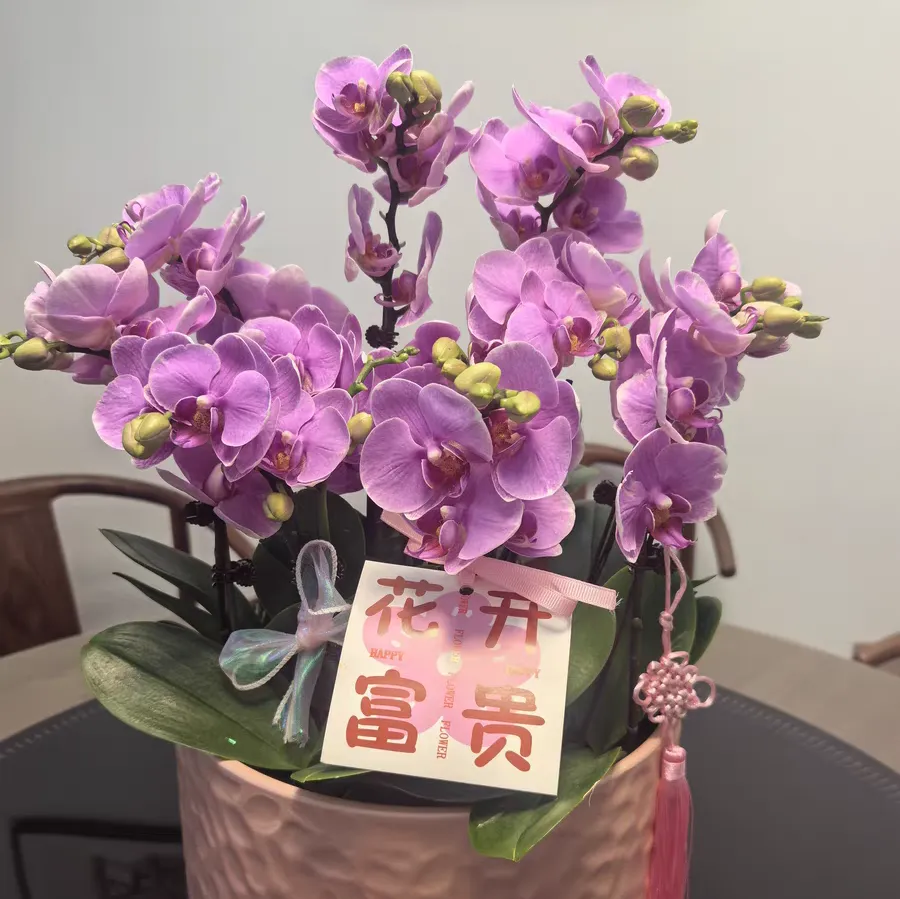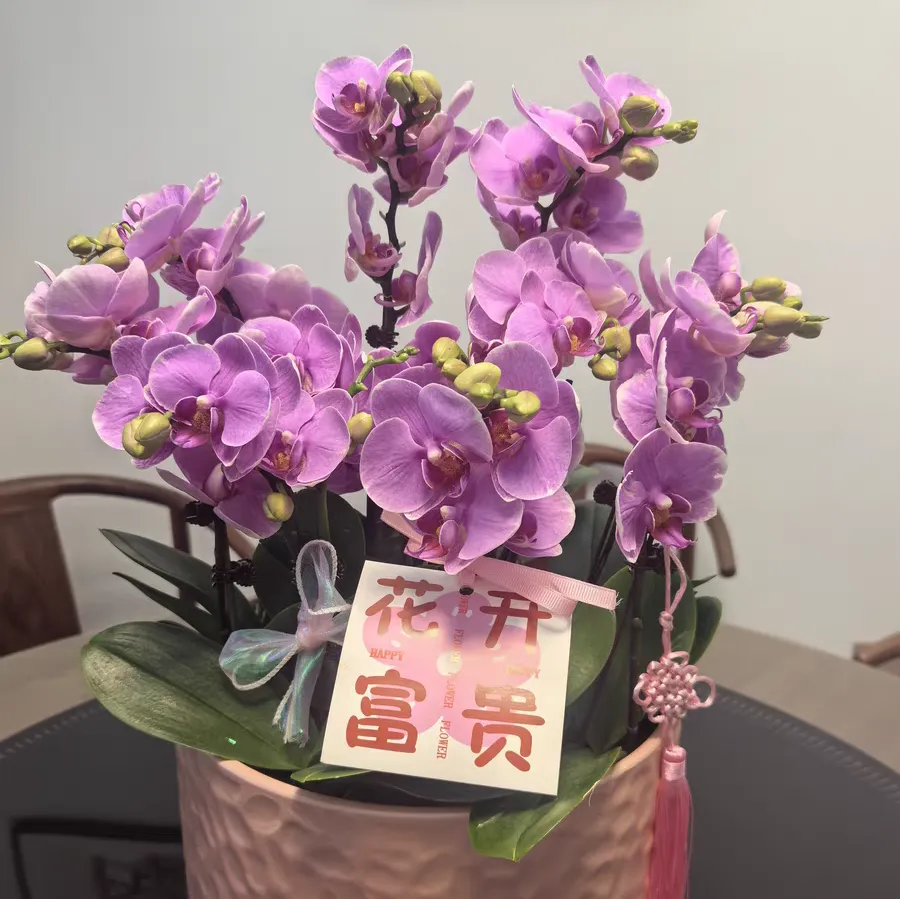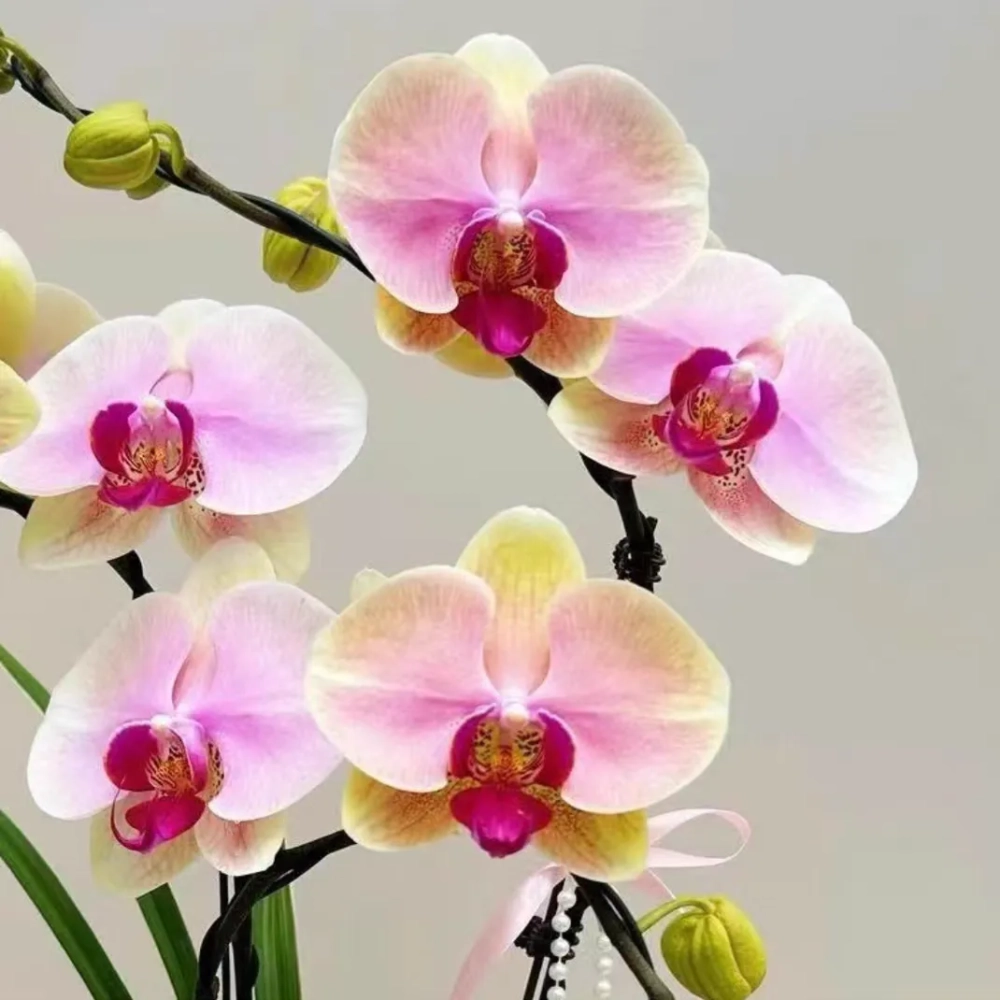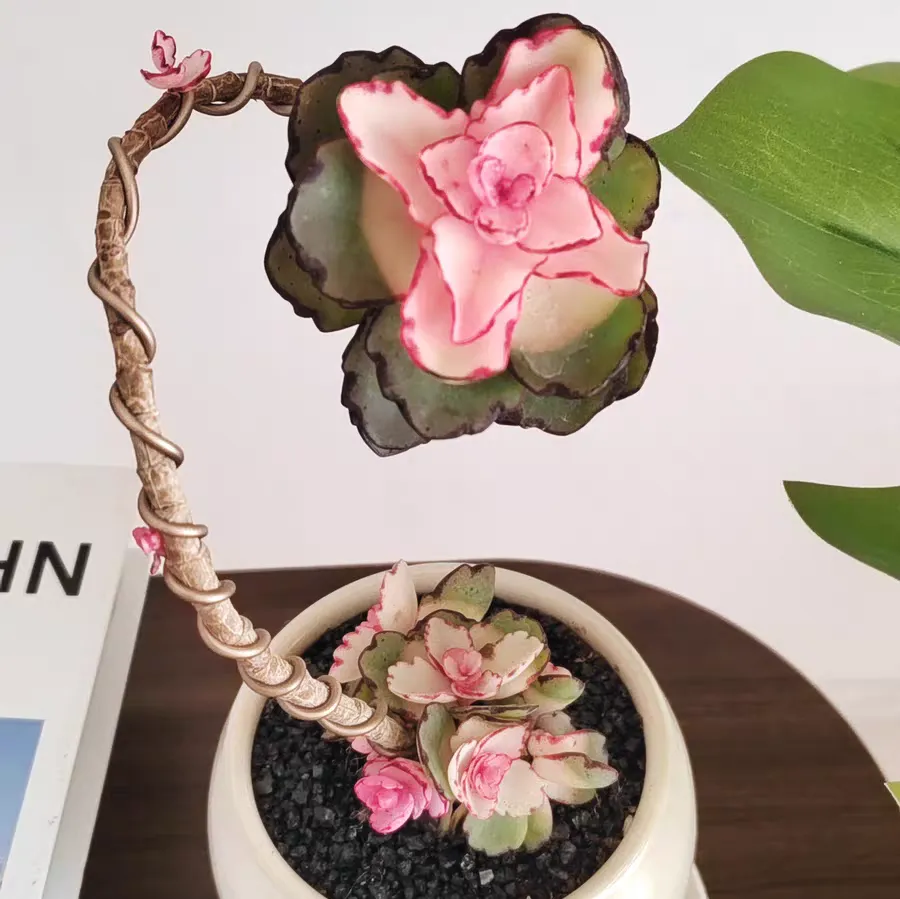When Phalaenopsis orchids are in bloom, they are both elegant and gorgeous, and many people want to grow them. Today, I'll tell you how to change the cultivation method of Phalaenopsis to hydroponics. It's clean and beautiful, and you can clearly observe the growth of the roots.
1. Remove from the pot: First, take the Phalaenopsis out of its original pot. Be sure to be gentle and avoid damaging the roots. After taking it out, gently shake off the old sphagnum moss on the roots. Then, place the Phalaenopsis under the faucet and rinse it slowly with a small stream of water to wash away the remaining sphagnum moss and dirt, leaving the roots clean.
2. Pruning: Find a sterilized pair of scissors and cut off all the blackened, shriveled, and hollow rotten roots. These rotten roots are useless and are likely to attract bacteria, affecting the health of the Phalaenopsis. When cutting, make sure the cut surface is smooth and avoid damaging the healthy roots.
3. Sterilization: Prepare a solution of carbendazim, which is a great helper for sterilization. Soak the pruned roots of the Phalaenopsis in the solution, ensuring that the solution covers all the roots. Soak for about 15 minutes. After soaking, take it out and let it dry in a well-ventilated place before proceeding to the next step.
4. Container: There is a trick to choosing a hydroponic container. It is best to use a transparent one, such as a glass bottle or a plastic cup. The advantage of a transparent container is that you can see the water level and the condition of the roots at any time, making it convenient to adjust. The size of the container should be appropriate for the size of the Phalaenopsis plant, neither too big nor too small.
5. Water level: Add some water to the container, and then put the dried Phalaenopsis in it. Pay attention that the water level should never submerge all the roots. Only the tips of the bottom roots need to touch the water. This can ensure that the roots absorb water and also have good air permeability. When you notice that the water level is low, add some water.
6. Changing water: The frequency of changing water depends on the season. In spring and autumn when the weather is good, change the water about once every 7 days. In winter, when it is cold and the water evaporates slowly, changing the water once every 14 days is sufficient. Each time you change the water, don't forget to add some special nutrient solution for Phalaenopsis to supplement its nutrients. Follow the instructions for the amount of nutrient solution, and don't add too much or too little.
7. Lighting: Phalaenopsis likes light, but it can't stand direct strong sunlight. Placing it on a bay window with a sheer curtain is a good choice. The sheer curtain can block the strong light, allowing the Phalaenopsis to receive soft light. This way, it can grow normally without getting its leaves sunburned. If the light at home is really poor, you can buy a plant grow light to supplement the light.
In short, Phalaenopsis prefers weakly acidic water. If the water at home is hard, don't use tap water directly. You can collect some rainwater. Rainwater is clean and weakly acidic, which is very good for Phalaenopsis. If there is no rainwater, take out some tap water and let it sit in the sun for a few days. After the chlorine in the water has dissipated, you can use it to water the flowers.
How to cultivate Phalaenopsis in hydroponics?

Share with
Tagged in :




Leave a Reply